Accelerating and Aligning
Population-Based Payment Models:
Performance Measurement
Report: Released July 22, 2016
Description
Performance measurement, which evaluates provider organizations on the basis of quality and outcomes, helps ensure that patients receive high-quality care and achieve their health goals. This white paper offers both short-term recommendations and a longer-term vision for accelerating alignment around performance measurement in population-based payment (PBP) models. The paper describes how to evolve from granular measurement systems of the full continuum of care—those which focus on narrow and specific care processes—to macro-level measurement systems that are focused on outcomes.
Related Papers
The PBP Work Group authored four papers focusing on issues foundational to the success of PBP models. These include:
Authors
Publication Info
Publication date: July 22, 2016
38 pages
Suggested Citation: Health Care Payment Learning & Action Network. Accelerating and Aligning Population-Based Payment: Performance Measurement. July 22, 2016.
Table of Contents
About the CMS Alliance to Modernize Healthcare
Health Care Payment Learning & Action Network (LAN)
Foundation Principles on Performance Measurement
Summary of Needed Innovative Models
Setting Priorities for Measurement Development
Accelerating Measure Development and Use
Appendix B: Selected Examples of Core Measures/Measure Sets
Appendix C: LAN Related Content
Appendix D: Principles for Patient and Family Centered Payment
Alternative Payment Models (APMs)
Alternative payment models deviate from traditional fee-for-service (FFS) payment, insofar as they adjust FFS payments to account for performance on cost and quality metrics, or insofar as they use population-based payments that are linked to quality performance.
“Big dot” measures
Big dot measures assess the overall system performance based largely on the outcomes produced, rather than on the processes used to produce them.
Fee for Service (FFS)
The existing FFS system creates incentives for additional volume of services, while also undervaluing certain services. The current FFS system is not conducive to the delivery of person-centered care because it does not systematically reward high-quality, cost-effective care.
Full Continuum of Care
All aspects of care delivery, spanning preventive to end-of-life services in all settings.
Measure sets
A collection of measures that are mutually reinforcing to produce positive outcomes for a defined patient population.
Performance Measurement
Performance measurement encompasses the development and implementation of metrics that assess the clinical quality, health outcomes, patient care experience, and cost of care provided to patients. Performance measurement can be used both for accountability and improvement purposes. Performance measurement makes it possible to monitor and quantify how well population-based payment models achieve and reward the Triple Aim of better care, better health, and lower costs.
Population
A group of people who are cared for by a particular provider, live in a particular community, or share a similar characteristic (e.g., condition, age, gender, race, or ethnicity).
Population-Based Payment (PBP)
Population-based payment models offer providers the incentives and flexibility to strategically invest delivery system resources, treat patients holistically, and coordinate care.
Population-Based Payment Model
A payment model in which a provider organization is given a population-based global budget or payment and accepts accountability for managing the total cost of care, quality, and outcomes for a defined patient population across the full continuum of care. PBP models discussed in this paper correspond to payment models in Categories 3 and 4 of the LAN’s APM Framework.
Total Cost of Care (TCOC)
A broad indicator of spending for a given population (i.e., payments from payer to provider organizations). In the context of PBP models, in which provider accountability spans the full continuum of care, TCOC includes all spending associated with caring for a defined population, including provider and facility fees, inpatient and ambulatory care, pharmacy, behavioral health, laboratory, imaging, and other ancillary services.
The LAN has written a suite of papers to help align payment reform efforts.
The papers include recommendations on the design of two payment reforms—population-based payments and clinical episode payments—from the two most comprehensive categories defined in that framework. These recommendations are the result of input from a wide variety of persons and organizations with either direct experience with implementing one or the other payment reform or deep experience in the health care field.
What purpose does performance measurement play in alternative payment models?
Performance Measurement is one of several fundamental components of alternative payment models (APMs), and specifically population-based payment (PBP) models. Clear performance goals addressing clinical quality, health outcomes, patient-care experience, and cost-of-care form the basis for APM agreements between providers and payers. Under these payment models, performance measurement plays a dual role of establishing accountability and encouraging improvement. It provides the set of standards by which providers, payers, purchasers, and patients can collectively assess whether health care and health targets are met.
Why doesn’t the PBP Work Group’s Performance Measurement White Paper include specific recommendations on measure sets or measures?
The purpose of this paper is to help create a culture and environment conducive to designing and implementing measurement systems that are tailored to the demands of PBP models. It describes types of measures and categories of data needed to build a reporting infrastructure required for the long-term success and sustainability of PBP models. However, the paper does not include recommendations on specific measures that should be included in measure sets for PBP models. There are many other groups actively involved in developing consensus-based core measure sets, and the PBP Work Group did not think it was appropriate to duplicate efforts in this area.
Are you proposing that Performance Measurement measure sets be the same, or different for commercial and government payers?
The PBP Work Group believes measure sets for PBP models should be aligned to the greatest extent possible with common market segments. There is no principled reason why performance measurements should differ between public and private payers absent statutory or regulatory reasons. Nevertheless, the Work Group recognizes there are principled reasons to adopt different measure sets in market segments that target different populations, and as a result we do not expect complete alignment in measure sets across market segments.
How is it possible to reward achievement and improvement when using absolute measure targets, such that measurement systems provide strong incentives for both high and low performers to improve?
One approach is to use statistical modeling to establish the “high-end” of what is possible to achieve a measure in “absolute” terms (e.g., a beta binomial distribution). Such techniques can also help clarify the minimal level of performance that the model will reward, again, in “absolute” terms. With this performance range in place, it would then be possible to system in which incremental improvements within the range are rewarded incrementally. So long as the minimum performance threshold is within reach of most providers, this type of system would motivate low performers to meet the performance threshold and subsequently clear the successive gates within the performance range. Similarly, so long as the high end of the performance range represents a standard of excellence, this type of system would motivate high performers to continue to improve until they meet the standard of excellence.
Are you suggesting eliminating process measures once outcome measures sets are developed?
The paper recognizes the value of process measures and does not endorse eliminating them. Rather, the Work Group is proposing a new approach to using process measures to assess and reward performance. For the time being, as more outcomes-based measures are being developed, the Work Group believes it will necessary to combine process measures into aggregated Level 2 measures that are used to adjust payments in PBP models. For the purposes of adjusting PBP payments, the Work Group recommends replacing these aggregated process measures with Level 2 outcomes-based measures as they are developed and implemented. Nevertheless, the Work Group envisions that process measures will continue to be valuable for providers’ internal quality improvement activities, as higher performance on the process measures will likely translate into higher performance on the Level 2 outcomes-based measures that are used for payment.
How does the white paper address the current limitations associated with performance measures for PBP models in which providers are accountable for the continuum of care?
The Work Group and LAN believe it is absolutely imperative to accelerate the transition to PBP models in light of current, unsustainable health-care spending in this country. Although existing performance measures are not sufficient to sustain long- term success of PBP models in achieving the goals of better care, better health, and lower costs, the Work Group strongly believes that existing measures are sufficient to initiate the transition to PBP. As discussed in the context of Recommendation 1, the Work Group believes it is appropriate to aggregate Level 3 measures together into Level 2 measures of health and quality. Until outcomes-based, “big-dot” measures are developed, these aggregated Level 2 measures can be used to adjust payments in PBP models. However, we are acutely aware that these aggregated Level 2 measures are not ideal, and this is why the white paper provides very specific recommendations on 1) the types of measures that will be needed for PBP models; 2) the types of governance and coordination that will be needed to accelerate the development of measures for PBP models; and 3) approaches to refining and implementing measures that expedite their uptake and improve their reliability. The Work Group expects that adopting these recommendations will dramatically increase the availability of outcomes-based PBP measures in the short- to medium-term.
Why doesn’t the paper recommend using Level 1 measures of health and well-being to adjust provider payments in PBP models?
The PBP Work Group recognizes that a small number of Level 1 measures of health and well-being are in use for policy and research purposes. Information is beginning to appear about how summary measures of population health and well-being may be able to be used by health plans and accountable care organizations, but no reports on how they could be used for payment. (Reference Kottke et ) Recommendation 1 of the White Paper notes that exploration of approaches to measurement and accountability models that might enable Level 1 quality and health measures should be developed and used. In the meantime, the White Paper highlights some important ways that the use of Level 2 measures of health and quality in PBP models brings social determinants of health into view, and causes providers to focus attention on factors outside of the four walls of clinical settings. This is a principal reason that the White Paper urges the importance of transitioning to more outcomes-oriented set of measures for the long-term success of PBP models.
To what extent does the Performance Measurement White Paper address total cost of care (TCOC) as a measure?
As discussed in the context of Recommendation 1, TCOC is a truly “big dot,” Level 1 measure for costs, because it evaluates ultimate outcomes (i.e., dollars spent) rather than the intermediary processes (e.g., emergency department utilization) that bring about these outcomes. TCOC is a vitally important measure in PBP models, forming the basis for accountability on cost (e.g., global budgets) and determination of shared savings or deficits. The use of TCOC for these purposes is addressed in detail in the Financial Benchmarking paper. Importantly, because of the use of TCOC in the risk-sharing arrangements that are central to PBP models, the Work Group holds strongly that “little dot” measures of cost, such as readmissions, ambulatory sensitive admissions, and non-urgent emergency room use, should not be included in PBP quality incentive measure sets. To include them in quality incentives would mean double paying providers for the same result—once through shared savings and again through quality payments. These little-dot measures are important to track and benchmark in PBP models, however, as they can be extremely valuable tools by which to support improvements on TCOC.
What input / role will patients and families play in selecting Performance Measurement variables?
The Work Group acknowledges the ever-increasing importance of patient experience and patient outcomes in assessing quality and appropriateness of care. Likewise, because families are partners critical to the success of acute and especially chronic care, their perspective and experience must be included in the voices that have a say in what ultimately is important to measure. Therefore, both patients and family members are integral to the decision-making around selection, prioritization, and development of measures for PBP models.
Could Performance Measurement within an APM result in reducing appropriate or necessary care?
The Work Group acknowledges that the incentives of PBP models differ significantly from those in traditional fee-for-service payment models. This is by design. While the fee-for-service payment model brought with it the risk of over-treatment due to incentives that reward volume and complexity of care, the introduction of budget constraints into payment, such as occurs with PBP models, brings the risk of under-treatment. A key role of quality and outcome measures in PBP models—and the reason they are given such extensive attention and focus in our work— is that the incentives tied to performance on these measures in PBP models are a key safeguard against under-use. Accordingly, the Work Group believes that the recommended approaches to performance measurement will help to ensure that PBP models do not lead to reductions in appropriate or necessary care. To the contrary, the Work Group believes that the proposed approaches to performance measurement and PBP model incentives will support significant improvements in quality, outcomes, and patient-care experiences.
Will provider capacity, especially primary care capacity, be measured as part of performance measurement?
The PBP Work Group recognizes that primary care is essential to the success of PBP models and that a lack of adequate primary care could conceivably skew the structure that supports and allows a PBP model to function properly. Consequently, the LAN has established a Primary Care Payment Model Work Group which will, among other considerations, address concerns around adequate primary care capacity and the implications of what that means for advancing PBP model implementation.
Webinars
November 2015 Webinar: LAN Learnings: Population-Based Payments (archive)
April 2016 Webinar: LAN Summit Session: Preliminary Recommendations on Performance Measurement (archive)
April 2016 Webinar: LAN Summit Session: When APMs Intersect: The Challenges and Opportunities of Implementing Episode Payment in a Population-Based Payment Environment (archive)
Blogs
Population-Based Payment Models: Overcoming Barriers, Accelerating Adoption
by Dana Gelb Safran, ScD; Glenn Steele, Jr, MD, PhD; and Elizabeth Mitchell
Archival material
Draft Paper: Accelerating and Aligning Population-Based Payment Models: Performance Measurement

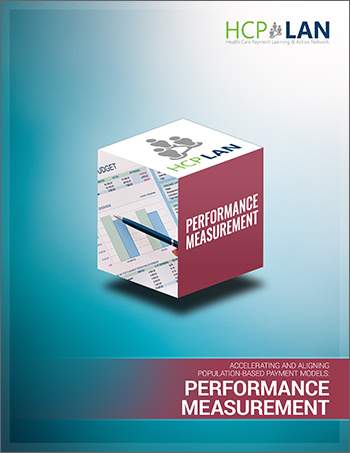
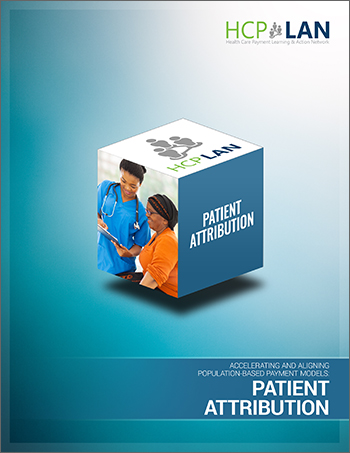



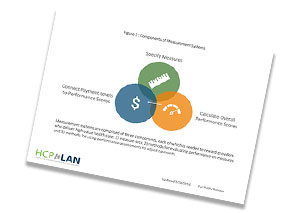
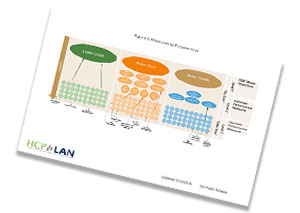
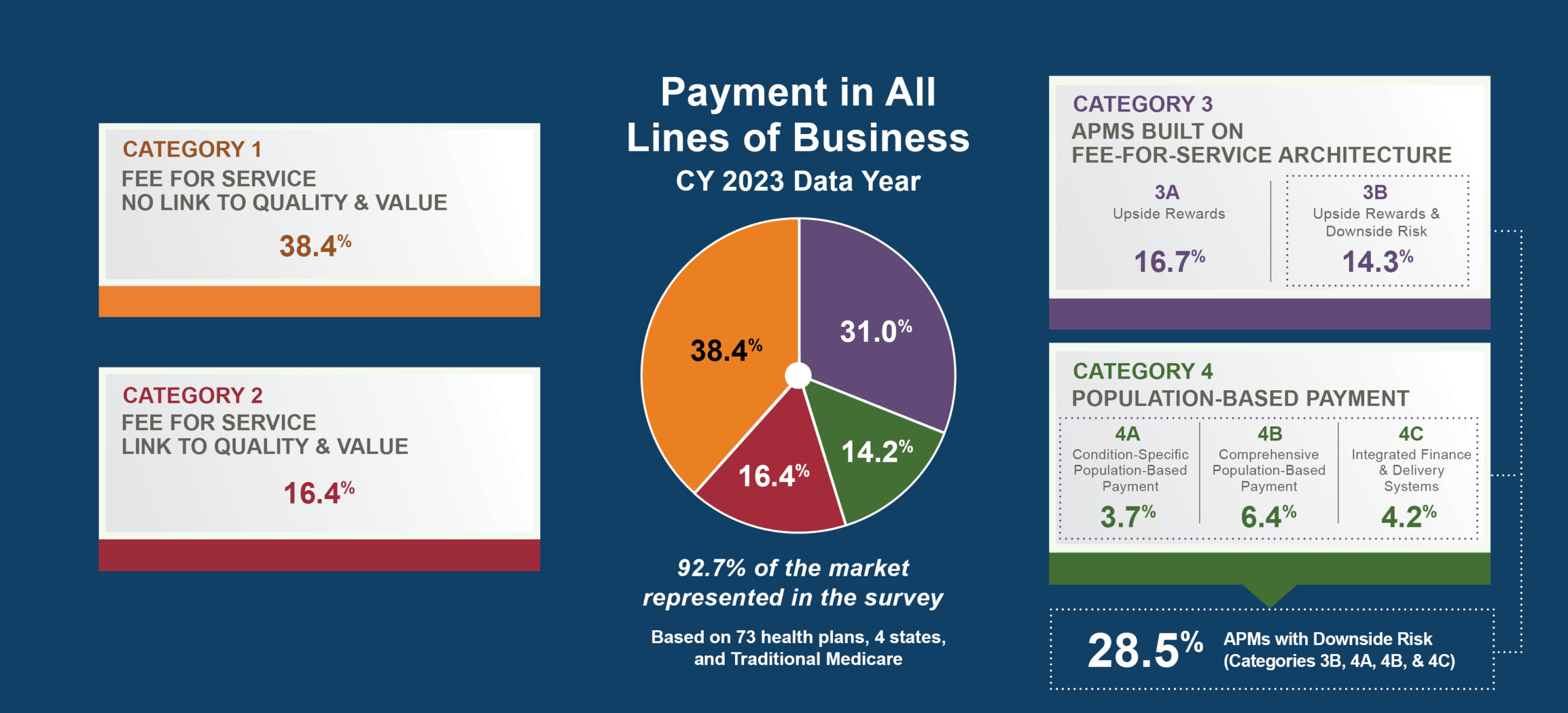

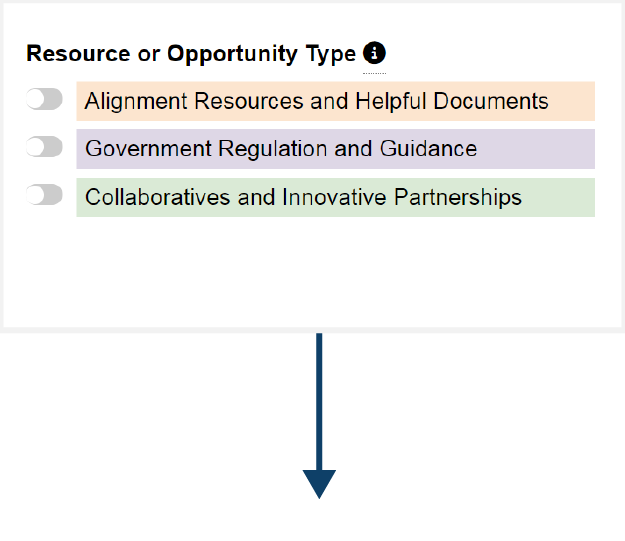
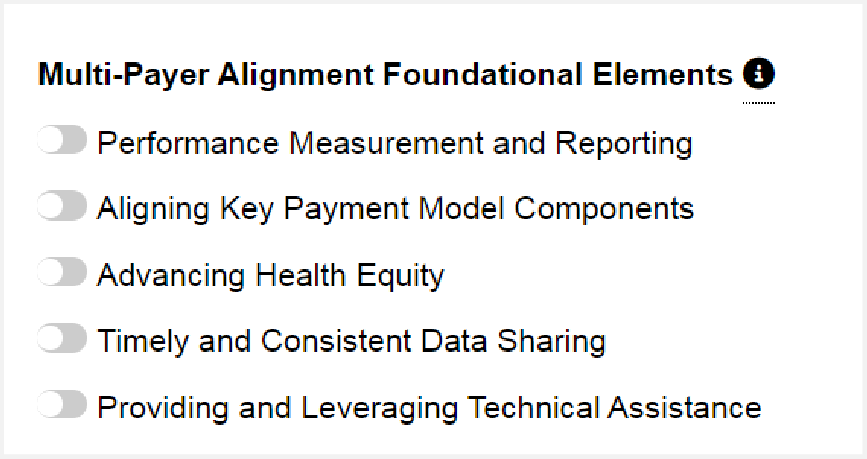




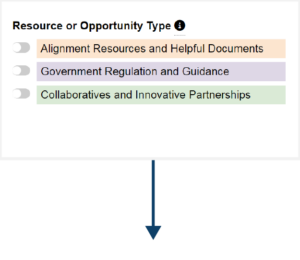



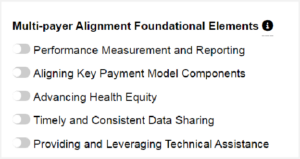




 Emily DuHamel Brower, M.B.A., is senior vice president of clinical integration and physician services for Trinity Health. Emphasizing clinical integration and payment model transformation, Ms. Brower provides strategic direction related to the evolving accountable healthcare environment with strong results. Her team is currently accountable for $10.4B of medical expense for 1.6M lives in Medicare Accountable Care Organizations (ACOs), Medicare Advantage, and Medicaid and Commercial Alternative Payment Models.
Emily DuHamel Brower, M.B.A., is senior vice president of clinical integration and physician services for Trinity Health. Emphasizing clinical integration and payment model transformation, Ms. Brower provides strategic direction related to the evolving accountable healthcare environment with strong results. Her team is currently accountable for $10.4B of medical expense for 1.6M lives in Medicare Accountable Care Organizations (ACOs), Medicare Advantage, and Medicaid and Commercial Alternative Payment Models. Mr. James Sinkoff is the Deputy Executive Officer and Chief Financial Officer for Sun River Health (formerly known as Hudson River HealthCare), and the Chief Executive Officer of Solutions 4 Community Health (S4CH); an MSO serving FQHCs and private physician practices.
Mr. James Sinkoff is the Deputy Executive Officer and Chief Financial Officer for Sun River Health (formerly known as Hudson River HealthCare), and the Chief Executive Officer of Solutions 4 Community Health (S4CH); an MSO serving FQHCs and private physician practices. Victor is the Chief Medical Officer for TennCare, Tennessee’s Medicaid Agency. At TennCare, Victor leads the medical office to ensure quality and effective delivery of medical, pharmacy, and dental services to its members. He also leads TennCare’s opioid epidemic strategy, social determinants of health, and practice transformation initiatives across the agency. Prior to joining TennCare, Victor worked at Evolent Health supporting value-based population health care delivery. In 2013, Victor served as a White House Fellow to the Secretary of Health and Human Services. Victor completed his Internal Medicine Residency at Emory University still practices clinically as an internist in the Veteran’s Affairs Health System.
Victor is the Chief Medical Officer for TennCare, Tennessee’s Medicaid Agency. At TennCare, Victor leads the medical office to ensure quality and effective delivery of medical, pharmacy, and dental services to its members. He also leads TennCare’s opioid epidemic strategy, social determinants of health, and practice transformation initiatives across the agency. Prior to joining TennCare, Victor worked at Evolent Health supporting value-based population health care delivery. In 2013, Victor served as a White House Fellow to the Secretary of Health and Human Services. Victor completed his Internal Medicine Residency at Emory University still practices clinically as an internist in the Veteran’s Affairs Health System. Dr. Brandon G. Wilson, DrPH, MHA (he, him, his) joined Community Catalyst as the Director of the Center for Consumer Engagement in Health Innovation, where he leads the Center in bringing the community’s experience to the forefront of health systems transformation and health reform efforts, in order to deliver better care, better value and better health for every community, particularly vulnerable and historically underserved populations. The Center works directly with community advocates around the country to increase the skills and power they have to establish an effective voice at all levels of the health care system. The Center collaborates with innovative health plans, hospitals and providers to incorporate communities and their lived experience into the design of systems of care. The Center also works with state and federal policymakers to spur change that makes the health system more responsive to communities. And it provides consulting services to health plans, provider groups and other health care organizations to help them create meaningful structures for engagement with their communities.
Dr. Brandon G. Wilson, DrPH, MHA (he, him, his) joined Community Catalyst as the Director of the Center for Consumer Engagement in Health Innovation, where he leads the Center in bringing the community’s experience to the forefront of health systems transformation and health reform efforts, in order to deliver better care, better value and better health for every community, particularly vulnerable and historically underserved populations. The Center works directly with community advocates around the country to increase the skills and power they have to establish an effective voice at all levels of the health care system. The Center collaborates with innovative health plans, hospitals and providers to incorporate communities and their lived experience into the design of systems of care. The Center also works with state and federal policymakers to spur change that makes the health system more responsive to communities. And it provides consulting services to health plans, provider groups and other health care organizations to help them create meaningful structures for engagement with their communities. Tamara Ward is the SVP of Insurance Business Operations at Oscar Health, where she leads the National Network Contracting Strategy and Market Expansion & Readiness. Prior to Oscar she served as VP of Managed Care & Network Operations at TriHealth in Southwest Ohio. With over 15 years of progressive health care experience, she has been instrumental driving collaborative payer provider strategies, improving insurance operations, and building high value networks through her various roles with UHC and other large provider health systems. Her breadth and depth of experience and interest-based approach has allowed her to have success solving some of the most complex issues our industry faces today. Tam is passionate about driving change for marginalized communities, developing Oscar’s Culturally Competent Care Program- reducing healthcare disparities and improving access for the underserved population. Tamara holds a B.A. from the University of Cincinnati’s and M.B.A from Miami University.
Tamara Ward is the SVP of Insurance Business Operations at Oscar Health, where she leads the National Network Contracting Strategy and Market Expansion & Readiness. Prior to Oscar she served as VP of Managed Care & Network Operations at TriHealth in Southwest Ohio. With over 15 years of progressive health care experience, she has been instrumental driving collaborative payer provider strategies, improving insurance operations, and building high value networks through her various roles with UHC and other large provider health systems. Her breadth and depth of experience and interest-based approach has allowed her to have success solving some of the most complex issues our industry faces today. Tam is passionate about driving change for marginalized communities, developing Oscar’s Culturally Competent Care Program- reducing healthcare disparities and improving access for the underserved population. Tamara holds a B.A. from the University of Cincinnati’s and M.B.A from Miami University.


 Dr. Peter Walsh joined the Colorado Department of Health Care Policy and Financing as the Chief Medical Officer on December 1, 2020. Prior to joining HCPF, Dr. Walsh served as a Hospital Field Representative/Surveyor at the Joint Commission, headquartered in Oakbrook Terrace, Illinois.
Dr. Peter Walsh joined the Colorado Department of Health Care Policy and Financing as the Chief Medical Officer on December 1, 2020. Prior to joining HCPF, Dr. Walsh served as a Hospital Field Representative/Surveyor at the Joint Commission, headquartered in Oakbrook Terrace, Illinois.








